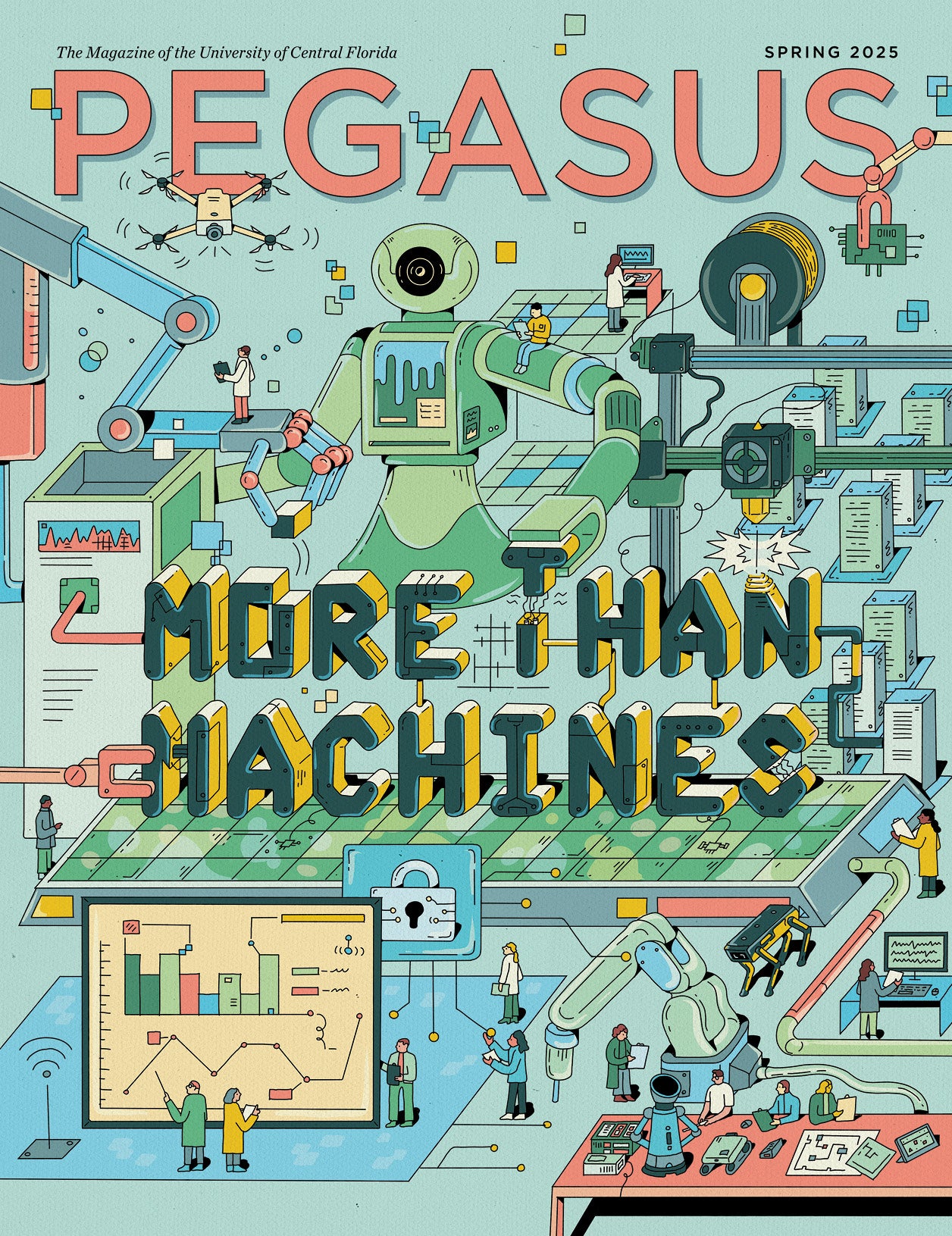The increase in remote work and e-learning sparked by the COVID-19 pandemic means more people are reading in digital formats, from eye-straining, small-text documents to PDFs that have embedded pictures and graphics. But there’s a bigger problem – the technology doesn’t lend itself easily to help enhance reading speed or comprehension.
Other than being able to change font size and background lighting, digital readers are left with few options. That’s why the University of Central Florida is partnering with global software company Adobe and others to improve the technology. This partnership is being highlighted today at the Adobe Max 2020 Creativity Conference that’s being held online this year.
UCF specifically is working with Adobe on a digital reading project that aims to reduce information overload. The project is part of Adobe’s continuing efforts toward creating products that empower people to change the world, such as its recent collaboration with a UCF-spin-off, the nonprofit Limbitless Solutions Inc.
The initiative includes a consortium of industry, nonprofit and university collaborators, including Readability Matters, Massachusetts Institute of Technology, Stanford University and the University of Arizona.
Using Adobe’s Liquid Mode technology, a reader can adjust text aspects — such as font size, style and character spacing — on PDFs that were previously set to a fixed text style and layout. UCF researchers, meanwhile, are building tools to match readers to reading formats that enhance their speed and comprehension.

“In early studies we have been able to accelerate some adults’ reading by more than 25 percent,” says Ben Sawyer, an assistant professor in UCF’s Department of Industrial Engineering & Management Systems leading the research at UCF.
“If your job requires you to read multiple hours a day, this is a huge potential workload reduction,” he says.
Reading is important for job success and civic engagement as poor reading skills are associated with unemployment, lower wages and voter apathy, according to studies from the National Center for Education Statistics.
With the advent of the pandemic, people are reading more electronic books, and remote learning has meant an increase in instruction and assignments through digital documents with fixed text.
But large screens, such as on personal computers, are not always readily available for people reading documents remotely, says Rick Treitman, entrepreneur in residence at Adobe, and Zoya Bylinskii, a research scientist at Adobe. Treitman and Bylinskii are facilitating the research.
Instead, people may have to use a tablet or smartphone if they don’t have their own computer or if they have to share a single computer with other family members.
“We are seeing that a lot of remote learning is happening on phones because someone else in the household may be using the only computer,” Treitman says. “It’s yet another device, and so if we can make the PDF experience on the phone better, then one student could do their reading on the phone, while another uses the laptop.”
Furthermore, when text is fixed into a certain style and layout in a document, it can cause problems as everyone sees text differently, so one text format doesn’t fit all, Treitman says.
For instance, one person may see normally spaced text as all scrunched together, thus hindering their reading. However, with digital text, this is a problem that can be easily addressed if readers can create their personal reading formats, as they can in Adobe Reader’s Liquid Mode.
For instance, even on older digital documents that may be already set in a small font size with tight spacing, a reader using the technology could adjust the text to suit their needs.
This takes control of the text display from the designer and gives it to the user, Treitman says.
“We’re flipping the script,” he says. “And that’s why we’ve turned to UCF and others to start this research. Text has always been designed by the author or by the publisher, and now we’re letting the reader design it. That’s a whole new paradigm.”
Sawyer’s team is currently collecting readability data from a large number of readers through the lab’s research website, Readabilitylab.xyz.
Sawyer says they hope to soon bring some of their participants into the lab for electrophysiological monitoring to record the electrical activity of the brain while a person reads; track people’s eye movements as they read digital text; and measure people’s reading speed and comprehension of different passages of digital text.
“COVID-19 is a challenge to in-person research, so we are testing 3D-printed eye-and-brain activity trackers and webcam reading tracking, all in an attempt to collect lab-quality data from people in their homes,” Sawyer says.
Current study participants are adult readers, but the researchers plan to expand their work to include younger and older readers, as well as non-English readers.
“Our initial research has told us that there’s not a one-size-fits-all solution,” he says. “Like a pair of prescription eyeglasses, we want to provide a reading experience personalized to an individual.”
Some of the lab’s findings have already been incorporated into existing Adobe software.
Sawyer’s collaborators include Benjamin Wolfe, a postdoctoral researcher at MIT, and Jonathan Dobres, a consulting psychophysics scientist with a doctorate in cognitive sciences. Esat Boucaud and Sarah Minion, laboratory assistants in Sawyer’s Virtual Readability Lab, are also supporting the initiative. Boucaud is a sophomore majoring in computational physics, and Minion is a junior majoring in electrical engineering, both at UCF.
Sawyer says not only will the research efforts help workers and students read digital documents better, it will also help reduce information overload.
“Nothing about the modern world is trending toward delivering us less information,” he says. “These technologies can provide some relief from that and can give people help with reading.”
Sawyer received his doctorate in human factors psychology and master’s in industrial engineering from UCF and completed his postdoctoral studies at MIT. He joined UCF’s Department of Industrial Engineering & Management Systems, part of UCF’s College of Engineering and Computer Science, in 2018. He is also director of LabX, an applied neuroscience group addressing human performance, and a joint faculty member of UCF’s Institute for Simulation and Training, School of Modeling Simulation and Training.



